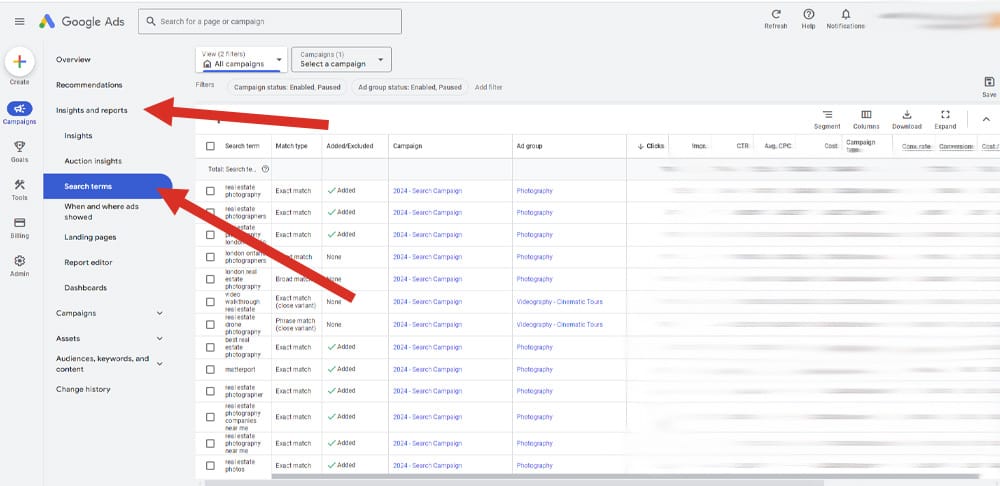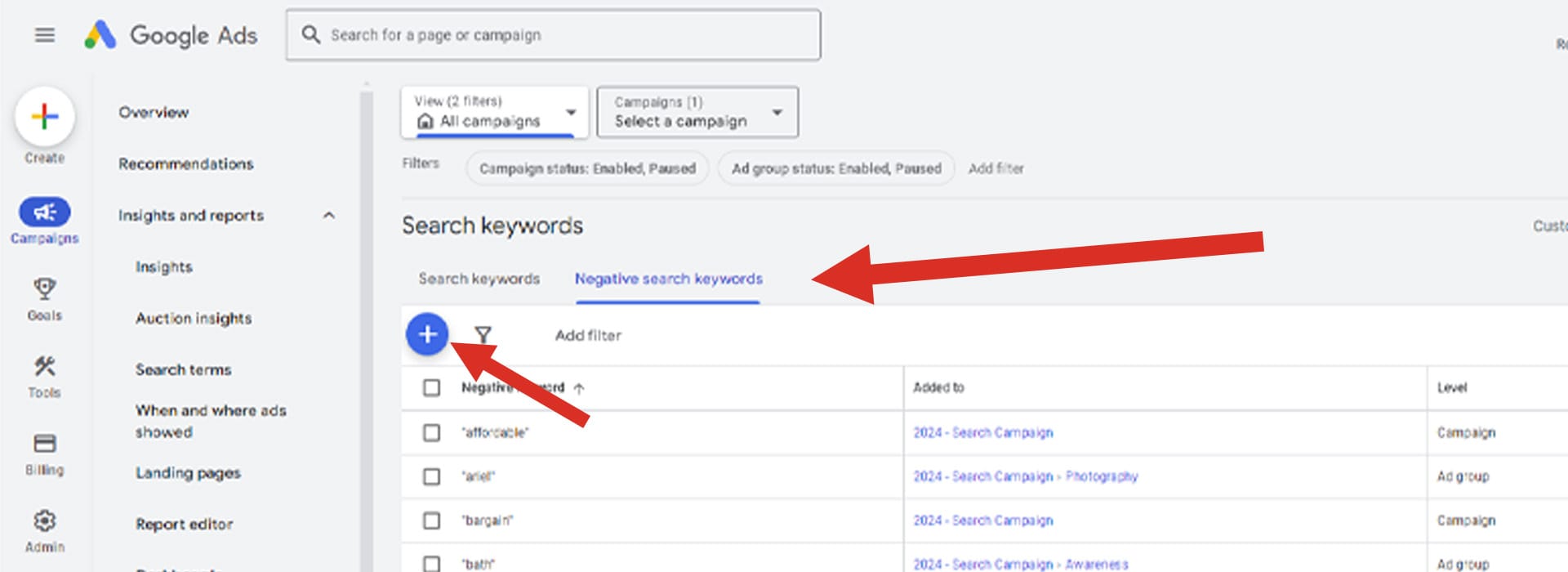If you’re running Google Ads without leveraging negative keywords, it’s like tossing half your ad budget into a black hole. Seriously, it’s one of those "set it and forget it" things that can make or break your campaign.
In this blog, we're diving deep into how to use negative keywords properly, and trust me, it's more than just throwing a few random terms into a list. We'll cover what they are, how to find them, and why every marketer (especially you) should care about refining their negative keyword strategy.
How to Find the Right Negative Keywords
Here’s where it gets fun, or at least more strategic. To find negative keywords, you’ll want to dig through the Search Terms Report. This report shows you the actual search queries that triggered your ads. I bet you’ll find a few irrelevant gems that are eating up your budget.
Let’s say you’re selling high-end men's shoes. Without negative keywords, your ad could show up for searches like "cheap men's shoes" or worse, "free shoes." That’s like inviting window shoppers who’ll never buy to your store, wasting both your time and ad spend.
Pro Tip: The goal is to eliminate the wrong clicks. If you’re paying for clicks that aren’t going to convert, you’re essentially burning money.
How to Find the Right Negative Keywords
Here’s where it gets fun, or at least more strategic. To find negative keywords, you’ll want to dig through the Search Terms Report. This report shows you the actual search queries that triggered your ads. I bet you’ll find a few irrelevant gems that are eating up your budget.

Once you're in, look for terms that have absolutely nothing to do with your offering. If you sell premium products, make sure to block terms like "cheap" or "discount." If you offer paid services, block words like "free."
Here’s an example:
You’re running ads for a luxury spa. A search for "cheap spa near me" triggered your ad. Not great, right? Adding “cheap” as a negative keyword ensures that you won’t show up for bargain hunters who aren’t your target customer.
Don’t Skip This: Go through your Search Terms Report at least once a week during the first month of your campaign. After that, a bi-weekly check-up can do wonders.
Types of Negative Keywords (And How to Use Them)
Now, when you’re adding negative keywords, it’s not a one-size-fits-all situation. There are three types:
1. Negative Broad Match
This is the default setting. Your ad won’t show up if the search query contains all your negative keyword terms, in any order.
Example: If your negative keyword is "cheap shoes," your ad won’t show for “buy cheap shoes,” but it might still show for “cheap leather shoes.”
2. Negative Phrase Match
With this, your ad won’t appear if the search query contains the exact phrase of your negative keyword.
Example: Using the same "cheap shoes" keyword, your ad won’t show for "buy cheap shoes" or "cheap shoes online," but might still show for "cheap leather shoes."
3. Negative Exact Match
The strictest of them all. Your ad will only be blocked if the exact search term matches your negative keyword.
Example: If you block "cheap shoes," your ad will only stop showing for that exact phrase. Anything with variations, like "cheap leather shoes," can still trigger your ad.
Pro Tip: Don’t go overboard with exact match negative keywords. Broad and phrase matches give you a wider net, preventing unnecessary clicks while keeping your targeting tight.

Why Negative Keywords Aren't One-And-Done
Here’s where a lot of marketers get it wrong. Negative keywords aren’t a one-time thing. The search landscape shifts, and what was relevant last week might not be this week. Plus, as your campaign runs, you’ll uncover new, unexpected keywords that trigger your ads.
For example, I once ran a campaign for a client selling high-end kitchen appliances. One of the search queries that triggered their ad was "appliance repair." Clearly, the people clicking on that ad were looking for a service, not to spend thousands on new products. After adding “repair” to the negative keywords, we saw an immediate drop in wasted spend.
Common Negative Keyword Pitfalls (And How to Avoid Them)
1. Going Too Broad with Negative Keywords
Sure, blocking "cheap" makes sense, but be careful not to block valuable clicks by adding overly broad terms. If you block "cheap," you might accidentally prevent searches like “best cheap alternative to [your product].”
Solution: Always review your Search Terms Report before adding broad negative keywords. It’s easy to overcorrect.
2. Forgetting About Negative Keywords in Display and YouTube Ads
Yeah, negative keywords work in Display and YouTube campaigns too. If you’re running a video ad, you don’t want your luxury brand to show up next to "DIY home repairs" unless that’s your niche.
Pro Tip: Make a separate negative keyword list for Display/YouTube. Keep it relevant to the type of content you don’t want to be associated with.
Summary:
Negative keywords might not be the flashiest part of Google Ads, but they’re essential if you want your budget to work smarter, not harder. Start small. Add a few obvious ones, monitor the performance, and keep refining your list as your campaign matures.
It’s a constant process. The more you fine-tune, the better your campaigns will perform, and the less you’ll pay for clicks that don’t convert! If you're a busy business owner you can checkout my Google Ad services by clicking here, and I'd be happy to help manage your account!
Ready to Grow Your Social Media & Ads Sales?


